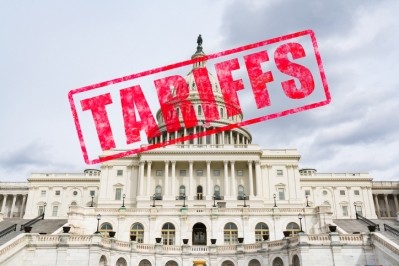ASA sees concerns for Chinese soybean market after steel, aluminum tariff suggestion

The US Commerce Department released a statement Friday on investigations into the imports of steel mill products and imports of aluminum. The products examined were found to “threaten to impair” national security based on the quantities and circumstances of the imports, it added.
The report findings are currently being reviewed and responses, which could include taking a range of actions or no action, would be due by April 11 for steel or April 19 for aluminum, the department said. Recommendations for potential remedies included adding a global tariff for steel of 24% or 7.7% for aluminum, or a tariff of 53% for steel and for 23.6% for aluminum, from several countries, including China.
Suggestions that the US was exploring tariffs on imported steel and aluminum from several countries, including China, as part of investigations under a section of the Trade Expansion Act, caused the concern among soybean farmers, the association said the American Soybean Association (ASA).
The ASA has previously noted the potential for negative soybean trade reactions from China if a decision on tariffs was made, it said.
Currently, China imports about one-third of the US soybean crop and the value of the market is estimated at more than $14bn, said the ASA.
“Today’s news from the Commerce Department is very concerning for soybean farmers,” said John Heisdorffer, ASA president. “China is not only our largest customer, it purchases more than all our other customers combined.”
The ASA asked the administration to develop a more workable strategy for ongoing trade with China.
“Soybean farmers look to the White House to move forward with a China strategy that strengthens the competitiveness of our domestic industries while at the same time growing our export opportunities,” added Heisdorffer.
Trade concerns
An additional concern for US soybean producers is that competitors in Brazil and Argentina could use the event to take a larger amount of the export market to China, said Heisdorffer.
“These potential tariffs have the potential to make life very hard for soybean farmers,” he added.
In the most recent World Economic Supply and Demand report from the US Department of Agriculture, US soybean exports were already noted to be down from what had been expected for the 2017/18 marketing year.
The forecast for exports was reduced by 60m bushels from earlier estimates, the USDA said. However, at that point, prices for the feed crop were not reduced.
The reduction in exports was based on shipments and sales completed through January and the increase in export competition from Brazil as the country has larger supplies than anticipated, said the department.
“In earlier conversations about potential tariffs under Section 232, the Chinese specifically identified US soybeans as a target for retaliation,” said Heisdorffer. “The barriers that retaliation would create will add significant further injury to an already-hobbled farm economy.”
The industry has already seen a drop in prices, he said. “Prices are down 40% and farm income is down 50%, and we simply can’t afford for those numbers to get worse.”










